
We take a closer look at the AR-10 and other large-frame AR rifles like it.
Living through historical events provides perspective on the past and future, and we are definitely living during interesting times. We’re also trending toward interesting new things across the gun industry: new ammunition technology, optics and, of course, firearms.
We’re at a very interesting crossroads in our national small arms history as well: Our military has settled on a new, large-frame combat rifle and cartridge, and we’re seeing a resurgence in interest in large-frame designs and cartridges. This is about to be the golden era in many ways, and we are certainly about to enter the golden age of the large-frame AR rifle.
Bigger Might Be Better
The AR-15 may be the most popular type of rifle in the country today, but it was not the first in the AR family to exist, nor was it the last modern design to emerge from its designers. This is pretty well-known history here, and I don’t want to offer a whole lesson on Eugene Stoner and ArmaLite in the mid-20th century … and the history of the M16 in Vietnam.
The takeaway here is that the designs we are about to discuss are rooted in the original AR-10, and even AR-18 models, developed by Stoner. The world at the time was looking for what amounted to a full-size battle rifle that would ideally be chambered in the then-new 7.62×51 NATO cartridge. Many were adopted, including the famous M14 and FAL rifles.
These full-size rifles were supplemented and eventually superseded by smaller and lighter weapons in 5.56×45 NATO, as military and civilian needs and interest shifted in the latter half of the 20th century until the War on Terror. The 21st century has seen a slow and relatively begrudged slog back to more powerful cartridges in larger and heavier weapons. The modern American military ended up facing 7.62x54R rifles and machine guns courtesy of Soviet presence in much of Asia for more than 2 decades, as well as in fighting by proxy in Eastern Europe and directly in Africa against Islamist groups.
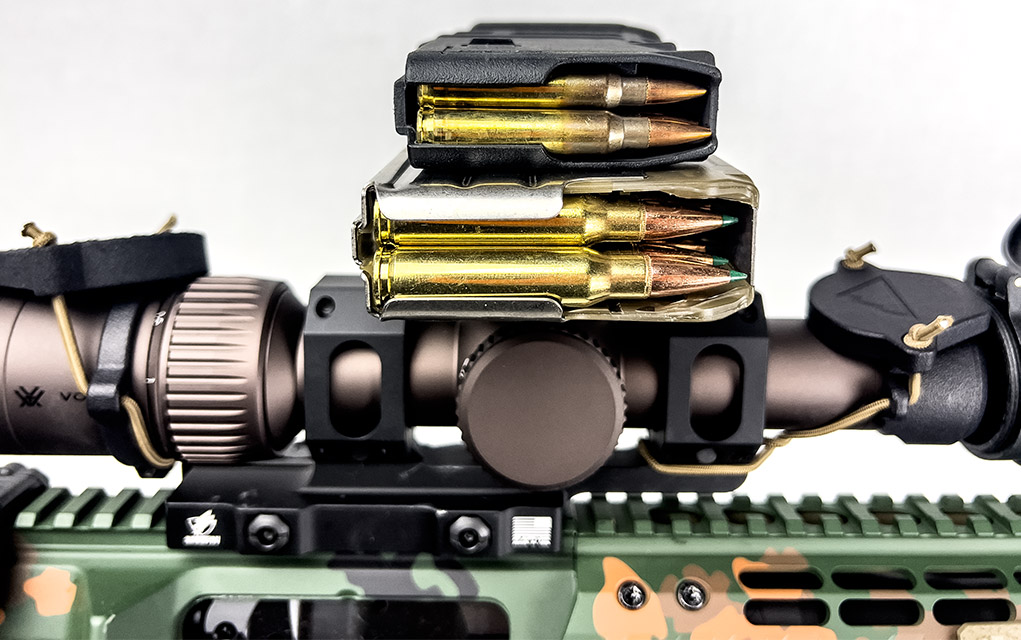
The effectiveness of these Cold War-era weapons has always been apparent, and for many reasons Western militaries have struggled against them in combat. The Tongo Tongo ambush of 2017, of which there is plenty of video, demonstrates how fearsome the 7.62x54R cartridge is from the point of view of Americans being killed by it. The same goes for the countless hours of combat footage from the Russo-Ukrainian War, where we consistently see the effects of larger rifles and cartridges.
All this to say is that there is significant interest in our modern era concerning larger rifles and more powerful ammunition. The American military has chosen the Sig XM7 as part of its Next Generation Squad Weapon (NGSW) program to, at least on paper, replace the M4 Carbine and M249 LMG. Both the M4 and M249 are chambered in 5.56x45mm, whereas the new weapons will be chambered in 6.8x51mm Fury.
How this will work out long-term is yet to be seen, but the modern military is placing emphasis on a larger primary weapon and a more powerful cartridge. The XM7 is a large-frame “AR” variant in that it has a similar manual of arms to the AR platform while not being of the same design. This is of critical importance to this discussion, as the large-frame “AR” market consists of a vast number of non-standard, non-compatible designs that share perhaps only a common magazine type.
The Mess
We commonly refer to the large-frame, semi-auto rifles we have today as the AR-10. This is the same thing as calling every tissue a Kleenex.
In fact, the AR-10 is a specific design among many, and there are very few true AR-10 designs on the market today … compared to what we may address as “308 AR” sized guns. There is very little standardization among these designs. In fact, I would go so far as to say that they are all largely incompatible, except that most today use the SR25 magazine, the common .308 mag we all know and love that is available from Magpul, Lancer and more.
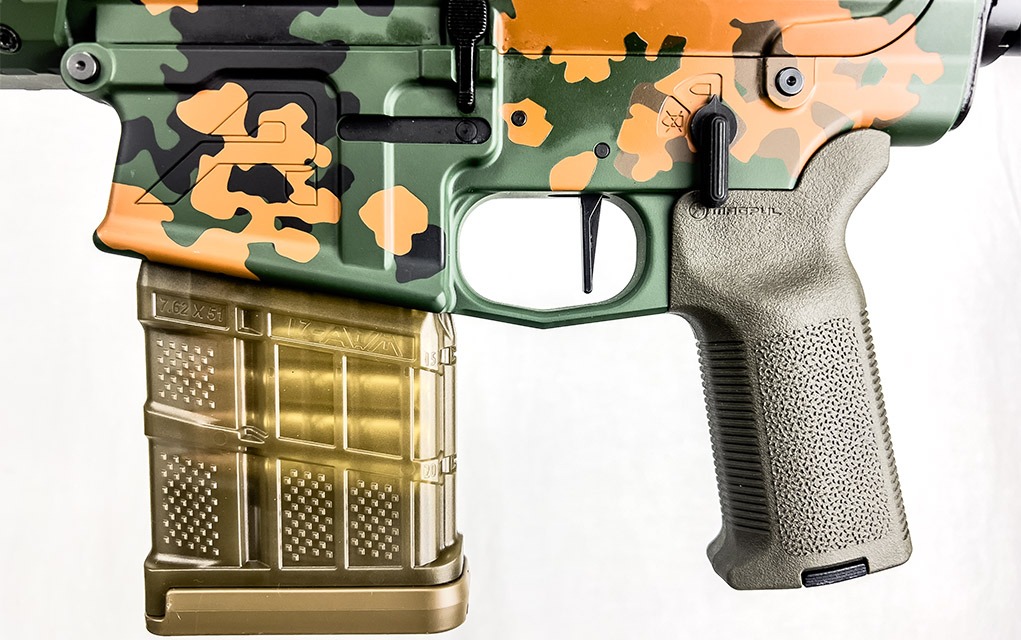
There is no common mil-spec set of parameters that dictate the large-frame markets. Each company does things a bit differently and, aside from a few metrics, you might find that parts you like are incompatible from rifle to rifle. You should consider most large-frame designs to be proprietary and unique.
This lack of standardization in firearms parts has resulted in some generally agreed upon standards that are much looser than those for the AR-15. For instance, the two feature rifles in the photography for this article have a good number of common parts but are not entirely interchangeable.
The Aero M5E1 upper cannot accept the PRI handguard system, but they do share a common bolt and charging handle and barrels. There are several thread-pitch variances between various upper receivers, so the PRI handguard might not even fit upper to upper with a “standard” profile.
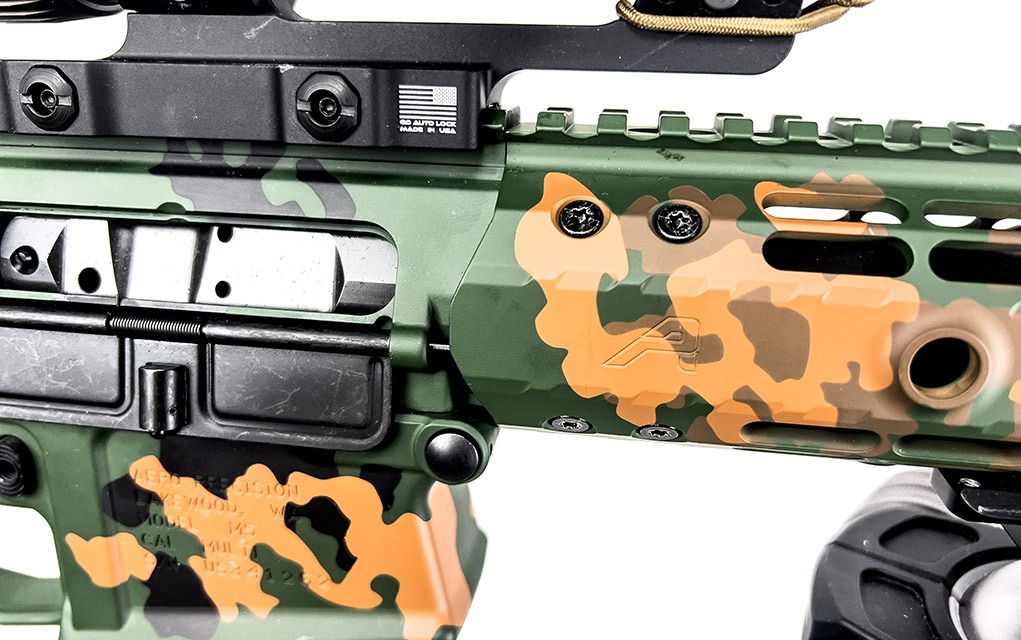
These rifles are loosely the same pattern externally, both being DPMS style, not AR-10. You can tell the difference because a true AR-10 variant will have a sharp angle at the rear of the receiver by the takedown pin, whereas the DMPS pattern receivers—not true AR-10 in design—will have a rounded junction between the upper and lower.
The DPMS-style receiver design has become something of a default standard for the large-frame AR, at least to consumers interested in building their own guns. You can use standard AR-15 lower parts on most of the build, but you do need different takedown pins, buffer and occasionally proprietary magazine release and bolt stop parts.
More maddening to the large-frame market is the large/small factory guns that occupy a bit of middle ground between AR-15 and DPMS AR .308 sizes. These should be considered entirely separate from builders’ discussions. The current generation of folding stock, self-contained upper rifles, such as those from Sig, are based on entirely different operating systems … as opposed to the direct-gas AR types.
While these uppers might fit on various lowers out there, there’s no guarantee of function across the board. You’ll notice that self-contained uppers designed for the AR-15 footprint are usually compatible with standard lowers, such as the BRN-180 family. You can use these on a lower with no buffer tube if you choose or simply swap them on to any mil-spec lower. This compatibility is not guaranteed to exist with the large-frame guns.
With an eye to the future, I know that we probably won’t be seeing anything resembling a completely standard footprint for the large-frame rifles. We seem to be looking at a permanently mixed market with perhaps a center that has conforming parts, but until we as a consumer base and industry at large can agree on what those truly standard specs may be, we will continue to have an ever-growing variety in terms of what constitutes these large-frame rifles.
At the very least, we are essentially at a point of general standardization for magazines, which is a step in the right direction.
The Author’s Builds
Some shooters have this idea of the AR-10 size rifles as something of a “battle rifle,” a full-horse cartridge out of a full-size gun, lower capacity and heavy—but advantageous—at medium to long range. The issue we run into is that this is a somewhat narrow point of new, and it really doesn’t give the large-frame rifle a good chance to show its versatility. These guns, even for the home builder, can be lightweight and offer a wide variety of possible build options.
I took it upon myself to construct a couple of very different large-frame rifles that were designed for different purposes, but also sharing the best aspects of each other and modern technology concerning optics and suppressors. Both of these rifles are of DPMS pattern and chambered for .308 Winchester.
I wanted to demonstrate that the large-frame rifle, while being bulkier than a standard AR-15, is still capable of being deployed as a compact, handy carbine … and as what people think of as a better role for a bigger gun, that of a long-range marksman’s rifle. You can, in fact, do it all with this frame size, from a 16-inch fast-handling carbine to a 20-inch precision rifle. However, the end use is subjective; both of these finished guns occupy much of the same effective range.
The cosmetics and ergonomics don’t influence the effectiveness of the .308 cartridge. A 16-inch barrel and a 20-inch barrel are functionally identical with most modern ammunition in terms of velocity and accuracy. At the general effective range of most semi-auto .308 rifles, this isn’t much, typically around 75 to 100 fps at the muzzle, and about 2,500 to 2,800 fps. In all my years of ballistic testing and working as a gun writer, I have never seen a need to go over 20 inches on a .308 Win.; 14 to 18 inches is, in fact, ideal for 99 percent of uses.
These rifles were completed to give you an idea of what you can do creatively, both with manufacturer-exclusive and “standard” parts for the large-frame, .308 AR-sized guns. Both guns are based on the DPMS pattern receivers but are not entirely interchangeable. Of note is the incredible One Hundred Concepts scope caps with glint-blocking front caps, easily one of the best small features on both builds.
Same But Different
The first is what I’d call a traditional-style, modern-twist SPR build using a PRI handguard for that mid-2000s War on Terror vibe. The receiver set and bolt carrier group are from Faxon Firearms and have a threaded barrel nut setup similar to common AR types. Assembly of this rifle was a little complicated with getting all the rail system and barrel nut situations in place, but it all went together nicely.
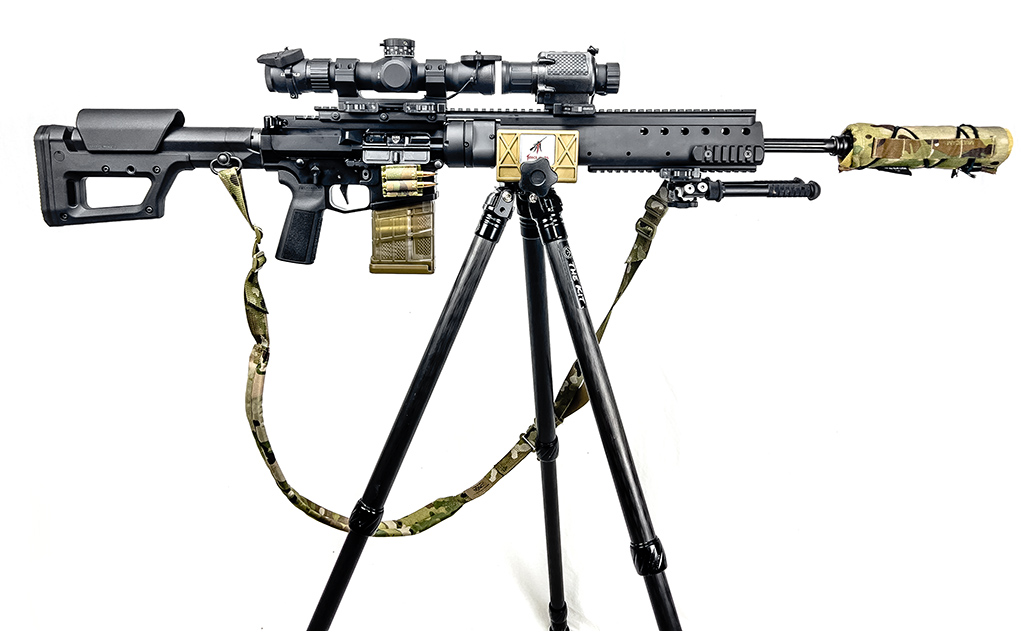
I opted for a 20-inch, fluted Faxon .308 Win. barrel and installed a Superlative Arms adjustable gas block to use with the JK Armament 155 suppressor on a Rearden mount. I also used a PRI charging handle. The lower is outfitted with Geissele parts and has a Magpul PRS Light stock and B5 grip. For optics, I wanted something in the medium-range class, so a Leupold MK5 HD 2-10x and brand-new Armasight clip-on thermal were used. These both feature AMD QD mounts.
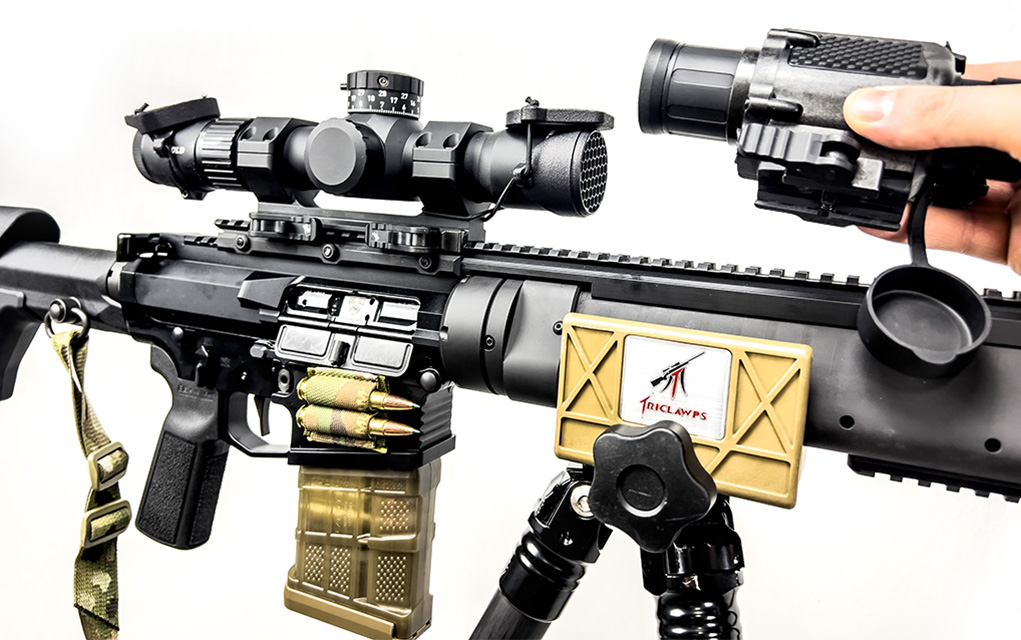
What we have here is something a bit retro and a bit modern, but making the best of both worlds to fit that full-size, stereotypical semi-auto .308 flavor we expect for this class of rifle.
The second build I went with my knowledge and experience in building a lighter and more linear .308, so I selected the Aero M5E1 receiver set in Partisan camo. The trigger and lower parts of this gun are respectively Timney and Aero, all great stuff. The bolt carrier group is also from Aero. I went with OD green Magpul furniture that fits my hands and shoulder really well while being low profile. The upper contains a Geissele charging handle and Criterion chrome-lined 16-inch barrel, choices I made for their ease of operation and ruggedness. I used a Q Cherry Bomb brake to mount the SilencerCo Omega 36M with Rearden adapter.
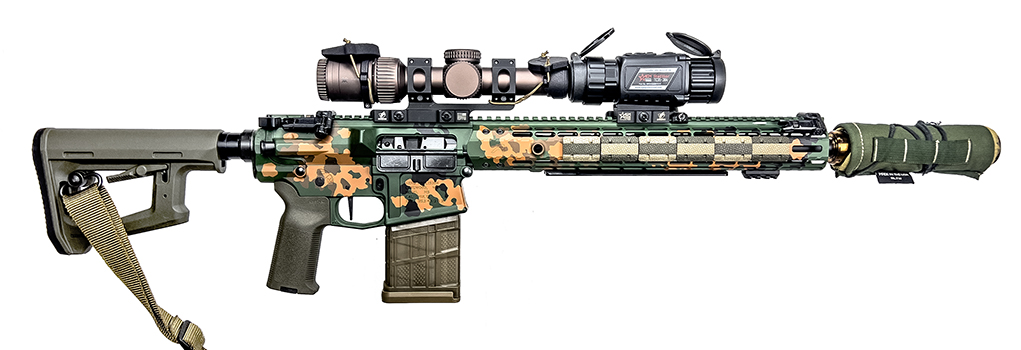
The optical package is geared for medium range nighttime hunting and daytime speed: a Vortex Razor 1-6x in ADM mount combined with a AGM Rattler clip-on thermal. Note how far forward you can mount the optics on this rifle, making it fast-handling but also compact with the advantage of being able to use the gun with the stock collapsed completely. Angled Magpul sights are also in play for close-up hog hunting. The underside of the handguard has a Magpul ARCA rail to allow tripod use in the field.
This is a great example of an intentionally built field rifle that takes advantage of many of the best components for hard use … but not overbuilt into a boat anchor.
Building these rifles was a bit of a trip. There were enough non-standard parts I had to make triple sure I was getting the right stuff in. Compared to building a regular AR-15, these took a little guessing to get right, but I did achieve what I set out to do without a lot of extra effort.
Be careful when ordering large-frame parts, because there are differences. If you want to play it safe, order from one place or contact a retailer like Brownells (the source of many of these parts) to talk with an expert before doing a build with parts from multiple makers.
Large-Frame AR Consumer Guide
Sig Sauer
As of this point, you’ll find a number of large-frame rifle options from Sig. The company lists their MCX designs in a variety of options to include the military 6.8x51mm chambering, arguably as close as you can get to the military’s new weapon. In addition, the SIG 716 is still available as a more traditional AR variant if the proprietary MCX lineup isn’t in your budget. While the 716 is affordable, the MCX variants run up the price tag notably.
Ruger
The Ruger SFAR is a middling class rifle that occupies that territory between larger AR-10 type guns and the smaller AR-15. It is, in fact, much closer in size to the latter than the former and feels quite small in the hand. I was very impressed when I first got a chance to look at these rifles, and it could well be one of the premier platforms for the light-recoiling 6.5 Creedmoor. I do not have much time on these rifles but that will hopefully change in the future, because the weight savings for a hunter like me is very interesting.
POF USA
Patriot Ordnance Factory has been making some very interesting designs for some time. Their Revolution models are of particular interest though, while a proprietary design significantly reduces the size of the rifle over a common AR-10 or .308 AR. The company’s website is extremely helpful in showing the real-world size differences you can expect to see with these models over both the original AR-10 and the DPMS-style variants. This is an example of a true reinvention, not just a cosmetic change.
Aero Precision
Aero Precision is one company dominating the builder’s market for the large-frame guns. They use DPMS pattern receivers for the M5 series and these are very straightforward to work with and are doing a very good job at forcing an industry standard by sheer numbers alone. If you’re planning to build instead of buy, Aero is an extremely strong brand for maximizing your options to get exactly what you want. I use this company often for my builds and they have yet to fail me even when there is so much variation in the large-frame market.
Faxon Firearms
Faxon Firearms is a company best known for their barrels. I have worked with them for over a decade and have a great many of their barrels in my rotation. All of them shoot lights out. The company produces barrels for your large-frame builds (one is in this article) but also complete rifles if you want to skip the build and get to business. They’re on the forefront of many new calibers, such as the 8.6 Blackout, and have a range of factory options you can choose from if the common chamberings aren’t exciting enough.
Springfield Armory
Springfield Armory lists several models chambered for .308 in their Victor lineup. These are affordable rifles and are feature rich right out of the box. While not exactly entry level, these guns are pretty much ready to go and are a great value for people looking for a no-frills pig or deer rifle that isn’t going to break the bank while still offering incredible accuracy and reliability. I can heartily recommend the Victor if you want to get straight to the field.
Palmetto State Armory
PSA is out there cranking out all the guns you didn’t know you needed. The company is making a great splash in the AK and historical markets without a doubt, but they’re also putting out some stunning large-frame AR rifles at a very good price. I had the opportunity to fire several over the last fall and winter, and I was shocked to learn that their price tags were very reasonable for the kind of accuracy and shooting I was getting. Their Sabre-10 rifles are visually pleasing and come in a number of color options, from black to pseudo-military. I’ve fired their M110 “clone” that retails at around $1,500 and was legitimately impressed past 800 yards.
Daniel Defense
At the time of writing, Daniel Defense has a few large-frame guns listed on their website, including the somewhat obscure .260 Rem chambering, a round that runs great in the AR but is commercially inferior to the 6.5 Creedmoor. I’m not one to ask questions in this aspect, but it is curious. The DD5 rifles are well known for reliability and accuracy, I’ve shot them plenty over the years and have always been impressed with what they can do.
Other Companies
These are just a few of the highlights for the large-frame rifles available today. Plenty more companies make this class of rifle including, but not limited to: CMMG, H&K, Franklin Armory, Rise Armament, Smith & Wesson, Rock River Arms, Radical Firearms, LWRC, PWS and so many more. The list will continue to grow as time goes on. That much is certain.
Editor's Note: This article originally appeared in the March 2025 issue of Gun Digest the Magazine.
Get On Target With The AR:
- Best Budget AR-15 Options And Buyers Guide
- Go Small With These 8 Economical AR Pistol Options
- AR-10 vs. AR-15: How Stoner’s Rifles Stack Up
- AR-15 Lower: Putting The Internals Together
- How It Works: The AR Upper
- Top AR-15 Upgrades From Top To Bottom
- Upgrades: Top AR-15 Parts
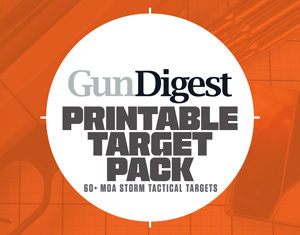
Next Step: Get your FREE Printable Target Pack
Enhance your shooting precision with our 62 MOA Targets, perfect for rifles and handguns. Crafted in collaboration with Storm Tactical for accuracy and versatility.
Subscribe to the Gun Digest email newsletter and get your downloadable target pack sent straight to your inbox. Stay updated with the latest firearms info in the industry.

![Best Concealed Carry Guns In 2025 [Field Tested] Wilson Combat EDC X9S 1](https://gundigest.com/wp-content/uploads/Wilson-Combat-EDC-X9S-1-324x160.jpg)


![Best 9mm Carbine: Affordable PCCs [Tested] Ruger Carbine Shooting](https://gundigest.com/wp-content/uploads/Ruger-Carbine-Shooting-100x70.jpg)
![Best AR-15: Top Options Available Today [Field Tested] Harrington and Richardson PSA XM177E2 feature](https://gundigest.com/wp-content/uploads/Harrington-and-Richardson-PSA-XM177E2-feature-100x70.jpg)
